You did it. You pulled the metaphorical trigger and purchased your first firearm. Now what?
You’re responsible for your safety with your new firearm, as well as the safety of those around you. And to become safe, you need to be familiar with your new handgun, rifle, or shotgun. That means shooting it.
Shooting your new firearm frequently requires that you go to a commercial shooting range, either indoors or outdoors. Alternatively, you may also go to a private range or an informal shooting spot. Regardless of what kind of range you go to, there are rules in place designed to protect you and those around you.
To start, the four main rules of firearms safety are always in effect:
- Treat every gun as if it were loaded. It doesn’t matter if you know for a fact that a firearm is empty; treat it as if it were loaded.
- Never point a firearm at anything you are not willing to kill or destroy — and that includes the Range Officers, other patrons, and yourself. Do not let the muzzle point at anything you are not willing to shoot. The best practice is to keep the muzzle pointed down range at all times, even when the gun is laying on the bench. No matter what happens, keep it pointed downrange.
- Keep your finger out of the trigger guard until it is time to shoot, and you have decided to shoot –Keep your trigger finger extended along the slide or frame until the time to shoot has come.
- Always be aware of your target and what is behind it – most formal ranges will have proper backstops to make sure bullets stop when they are supposed to. If that is not the case with your range, make sure there is something behind your target in case you miss, or the bullet goes all the way through.
When you get to the range, relax and take it slow. Watching what the other patrons are doing can give you a good clue. At most commercial ranges, checking in at the office is mandatory. Ask the range officers inside what the proper procedures are for their establishment. They absolutely have a vested interest in making sure that you have fun and are safe.
Once on the firing line, take a good look around. There are very important details to note:
- Where is the actual firing line?
- Where are the safety boundaries that keep you from getting in front of the firing line?
- How are those marked? Especially for larger outdoor ranges, there may well be specific flags flying that indicate whether the range is hot (meaning it is OK to shoot) or not.
- Where are the boundaries and berms that delineate where you may or may not fire?
- Are you allowed to handle a firearm anywhere besides the actual firing line?
- Where are the exits?
- Are there numbers at the shooting line that indicate your location and where you should post your target?
- Who/where are the range officers in case you need help?
- Where are fire extinguishers and first aid kits?
- Has information been posted that has emergency numbers and the physical address for the range just in case you are the one who needs to call for help?
You’ll often see a list of range rules posted inside or on the firing line. That list will frequently include most of the following (and if they don’t, they should):
- Casing and uncasing of your unloaded firearms must be done at the shooting benches, not behind the line or in your vehicle.
- Keep bolts and actions open when not actually on the line and firing.
- Make sure that you have the right ammunition for your firearm(s).
- Be respectful of your fellow shooters. Don’t interrupt them while shooting.
- No rapid fire (usually defined as no more than one shot every two seconds). Shoot only at your target.
- No horse play — i.e., don’t try all the silly stuff you see actors doing on TV.
- Shoot only at authorized targets — shoot only at your targets.
- Most ranges will not allow the use of tracer or armor-piercing ammo.
- Most ranges will not allow shooters to draw their pistol from the holster as part of shooting.
- No alcohol or drugs on premises — no one even suspected of being under the influence should be allowed to shoot.
Many public ranges will have official “Cease Fire” sessions where everyone is required to unload their firearms. Range Officers check them and then allow people to proceed downrange to check, post, or retrieve targets. Proper procedures if/when told to do so are:
- Open the cylinder of your revolver and empty out all fired or loaded cases. Leave the cylinder open and lay the revolver on the right side with the cylinder out.
- For a semi-auto pistol, drop the magazine, remove the round from the chamber and lock the slide to the rear. The pistol should be placed on the left side with the ejection port facing up.
- Keep the muzzles of handguns pointed downrange at all times!
- For shotguns and rifles, empty/remove the magazine and open or lock the bolt to the rear.
- Many locations will require the long guns to be placed in vertical racks behind the line. When moving your rifle or shotgun to the rack, keep your finger out of the trigger guard and keep the muzzle pointed straight up. That way they don’t get pointed at anyone.
- Do not touch any firearm for any reason while other shooters are downrange.
With everyone handling loaded firearms, most people at shooting ranges tend to be very polite. The code of conduct that keeps everyone in the right mood can be somewhat confusing to the new shooter. Important parts of the shooting-range etiquette include:
- Be respectful of other shooters, as you expect them to respect you.
- Shooters will often love to talk to you about their “toys” if you have a question. Good shooting requires concentration and asking them that question while they are in the middle of a string of fire can be a bad idea.
- Police up your empty boxes, empty brass, and old targets. Leave the range in better shape than when you arrived.
- Do not pick up brass from other shooters. Many at the range will remanufacture their own ammunition and that empty case is a very necessary component.
- Carefully watch where your empty brass heads when it leaves your firearms. Try not to bombard your neighbors with your empties. Be aware that their empties can fly towards you and freshly fired brass is hot — ask us how we know. For your safety and comfort, we strongly suggest that folks wear baseball-type caps (or something similar) and a high-necked shirt while shooting.
By following these rules, you’ll ensure your safety and the safety of those around you.
One last item that’s not quite a rule, but it should be. Always watch that other shooters are observing the rules as strictly as you do. If you see something wrong, notify a range officer immediately. Shooting at the range is an especially safe endeavor because everyone pays attention to what’s going on.

























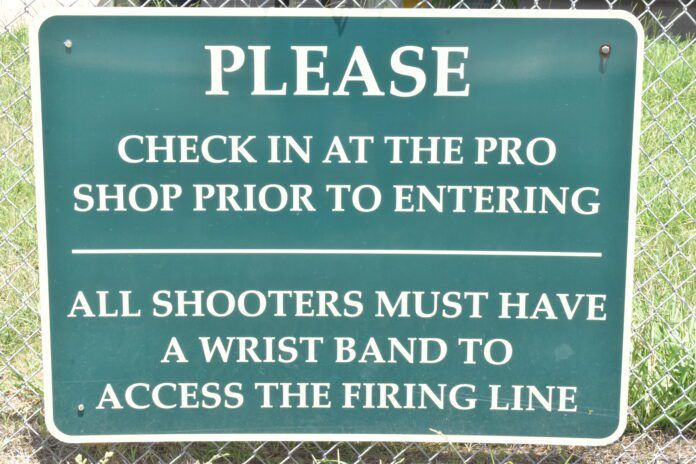
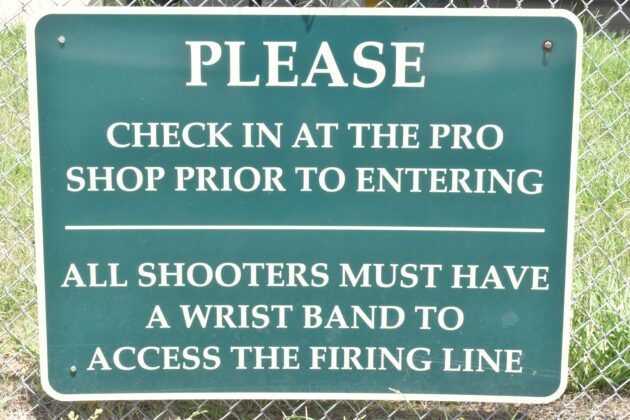
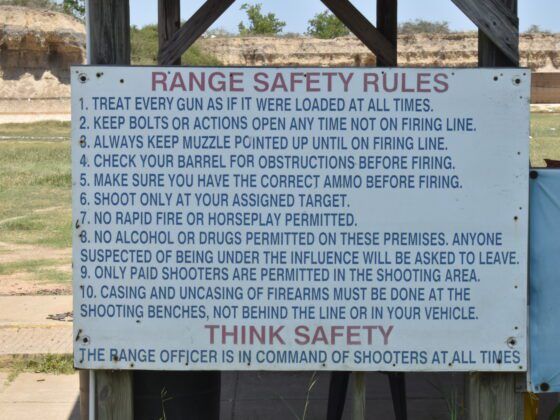
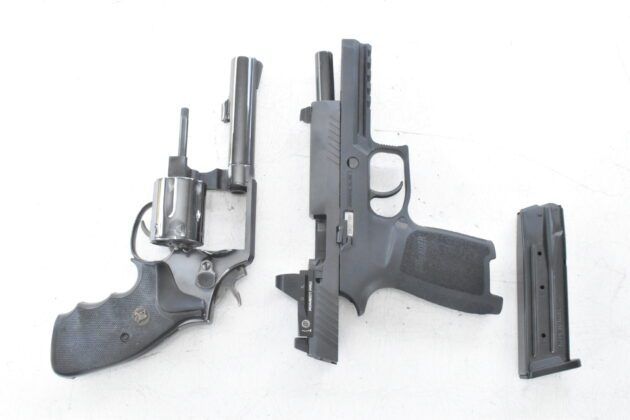
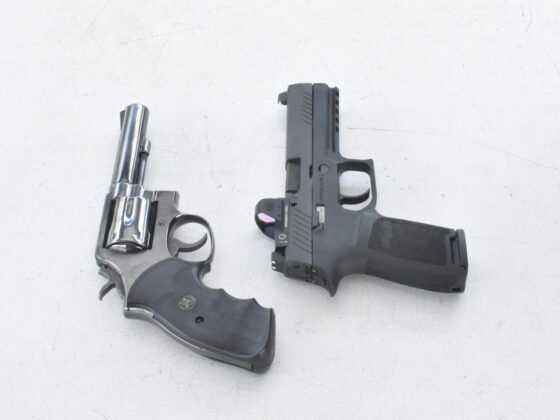
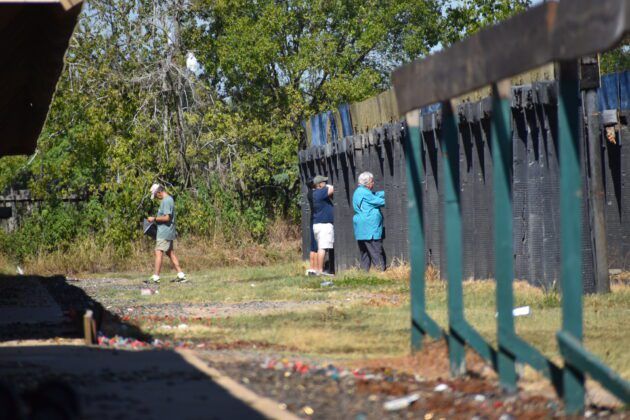
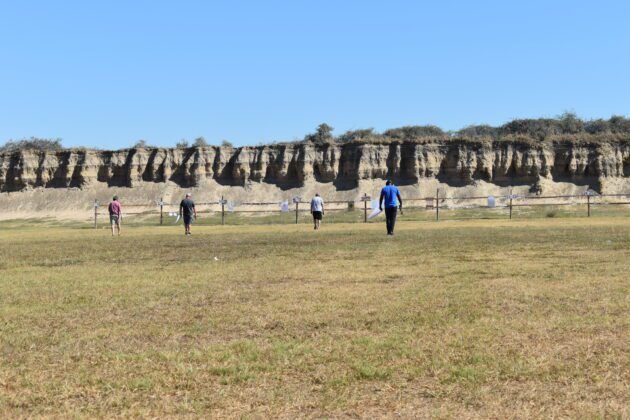
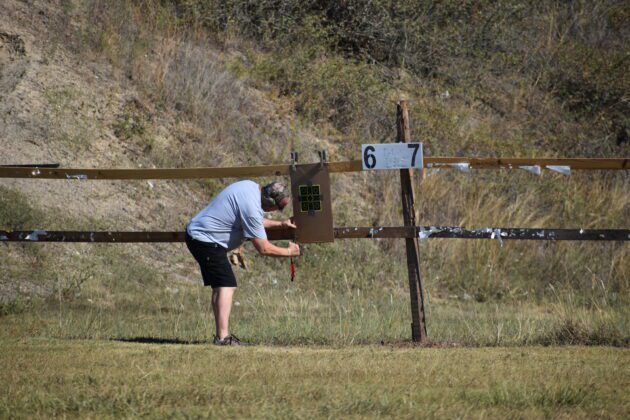
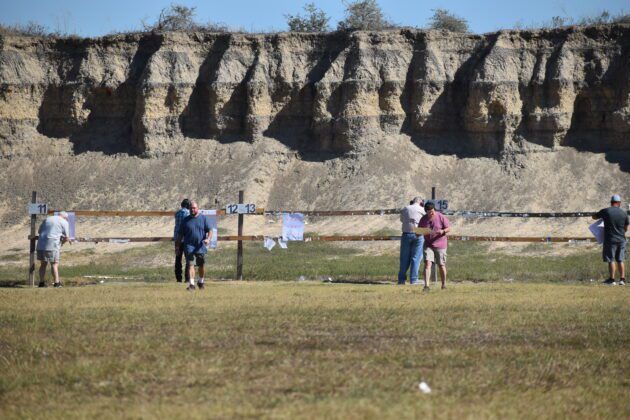
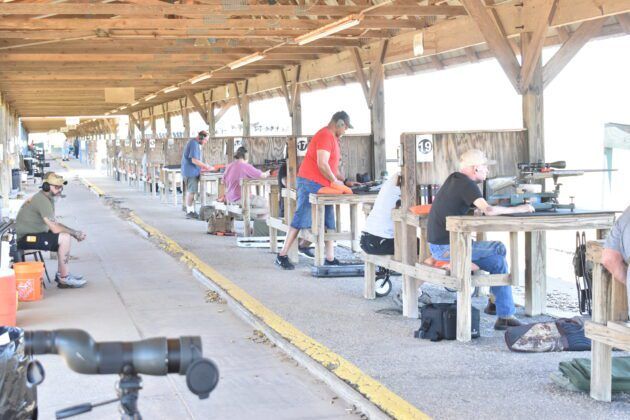
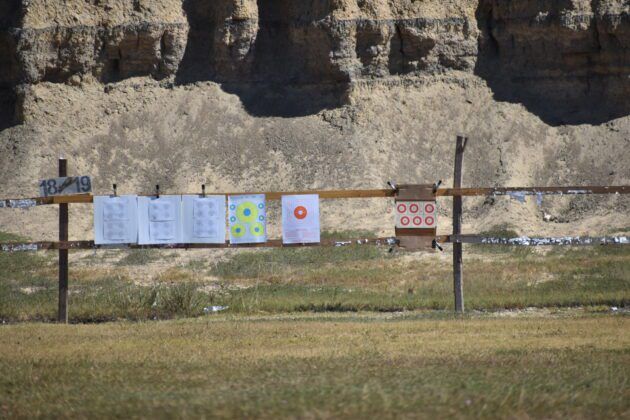

At an outdoor range, be sure to wear a blaze orange t-shirt or sweatshirt. Extra insurance you will be seen while going downrange to replace or inspect your target.
Extremely good advice ; As a former Instructor, Ive ( almost ) seen it ALL = Great article, Thanks
Very thorough coverage of what one needs to know at a range. Thanks.
At the Illinois State Rifle range ( near Bonfield, ILL.) an empty chamber Yellow/Orange Indicator – ECI is issued to members to insert into chamber – clearly indicating the chamber DOES NOT have a round inside.
Some ranges restrict shirt colors as the RSO’s wear Red or Orange shirts, so they can be identified. Check.
Excellent article. Long overdue. The need for this article is so high that I should have written this article years ago.
The infomation contained in this article should be reviewed by those who have already been to the range, but need to refresh their behavior at the line.